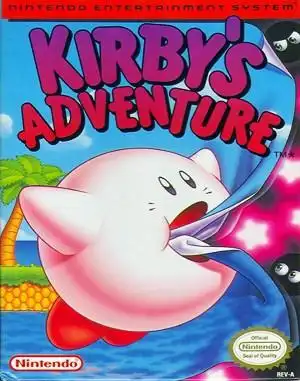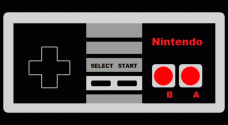Remember the vibrant splash of color that hit you when you first booted up an NES game that really pushed the hardware? For many of us, that feeling arrived with Kirby’s Adventure. Released in 1993 towards the end of the Nintendo Entertainment System's life cycle, this game wasn't just another platformer; it was a showcase of what the aging 8-bit console could still do, wrapped up in an adorable, pink package.
It's the game that truly solidified Kirby's identity, introducing the mechanic that would define the entire series: the ability to swallow enemies and copy their powers. Before this, in Kirby's Dream Land on the Game Boy, he could only inhale and spit foes out. Kirby’s Adventure blew open a world of possibilities, turning Kirby into a versatile, shape-shifting hero.
Let's take a trip back to Dream Land and rediscover why this title remains a cherished classic for retro gamers.
The Dreamy Premise
The story in Kirby’s Adventure is classic Kirby: simple, charming, and slightly surreal. The Star Rod, the source of all dreams in Dream Land, has been shattered and its pieces stolen by the seemingly villainous King Dedede. This plunges everyone into a dreamless sleep – a terrible fate for a place called Dream Land!
Kirby, ever the hero (or maybe just wanting his own good night's sleep), sets out to retrieve the pieces scattered across seven unique worlds. Along the way, he encounters Meta Knight and his crew, adding a touch of mystery and hinting that perhaps things aren't quite as black and white as they first appear. It's a straightforward quest that serves its purpose: guiding you through a delightful world.
More Than Just Floating
At its heart, Kirby’s Adventure is a platformer. You run, you jump, you navigate tricky environments. But Kirby's unique ability to inflate himself and fly/float adds a distinct dimension. While flying can make traversal easier in some spots, it also makes Kirby a larger, slower target. Many levels are designed to encourage ground movement, swimming, or precise platforming, meaning you can't just float over everything.
The controls are simple and intuitive, perfectly suited for the NES controller. One button to jump, one to inhale/use powers. Holding 'Up' lets you float, and 'Down + Jump' performs a quick slide attack. Pressing 'Select' discards your current power, a crucial move when you want to switch or find a better ability. The game generally feels responsive, although, like many ambitious NES titles, it can experience a bit of slowdown when the screen gets chaotic with too many sprites.
Swallowing the Competition: The Birth of Copy Abilities
This is where Kirby’s Adventure truly shines and cemented its legacy. Introducing the Copy Ability mechanic was a stroke of genius. Suddenly, inhaling an enemy wasn't just about using them as a projectile; it was about becoming them, or at least borrowing their signature move.
From the fiery breath of Fire Kirby to the slicing power of Sword Kirby, the defensive shield of Stone Kirby, or the sheer coolness of the UFO ability (often found by defeating mini-bosses), there was a fantastic variety. Each ability offered a different way to tackle enemies and environmental puzzles. While most powers only had one primary move compared to later games, for an NES title, this felt incredibly deep and innovative. Experimenting with different powers was a huge part of the fun and replayability.
A World of Wonder
Kirby’s Adventure takes you on a journey through seven distinct worlds, each with multiple stages and a boss guarding a piece of the Star Rod. From the cheerful beaches of Orange Ocean to the icy landscapes of Ice Cream Island and the starry void of Rainbow Resort, the environments are diverse and visually appealing.
Beyond just getting from point A to point B, the game encourages exploration. Hidden doors and secret exits are scattered throughout levels, leading to bonus stages, alternative paths, or even entire secret worlds. Finding all of these secrets and achieving 100% completion (which is satisfyingly displayed on the title screen) adds significant depth and replay value.
Beyond the Main Quest
Need a break from the main platforming action? Kirby’s Adventure includes several fun bonus games accessible from the overworld map. These mini-games are a great way to rack up extra lives. There's a crane game (often frustratingly difficult, just like real life!), an eating contest where you gulp down food faster than King Dedede, and a quick-draw game that tests your reflexes. The quick-draw was often my go-to for quickly boosting my life count!
NES Masterpiece? Graphics and Sound
For an NES game released in 1993, Kirby’s Adventure is a visual stunner. The use of color is exceptional, creating vibrant, detailed worlds that felt far more advanced than many earlier NES titles. Kirby and the enemies are charmingly designed and well-animated. The backgrounds are detailed, and the boss designs are memorable.
The music is equally fantastic. Composed by Hirokazu Ando, the soundtrack is incredibly catchy, cheerful, and perfectly complements the game's whimsical atmosphere. Tunes like the Float Islands theme or the classic boss music are instantly recognizable and stick with you long after you've turned off the console. The sound effects are simple but effective, from Kirby's gulping noise to the satisfying pop of defeating an enemy.
Revisit Dream Land Today
Feeling that nostalgic pull? Thankfully, Kirby’s Adventure isn't locked away in the past. You can officially play this classic on modern platforms:
- NES Classic Edition: It was included on Nintendo's miniature retro console.
- Nintendo Switch Online: Subscribers can play the NES version through the service's classic games library.
- Nintendo 3DS & Wii U: It was available on the Virtual Console for these systems.
These options make it easy to experience or re-experience this gem legally and conveniently.
Is It Still Worth Playing?
Absolutely. While some aspects, like the single-move copy abilities or occasional slowdown, show its age, Kirby’s Adventure holds up remarkably well. The core gameplay is solid, the level design is engaging, the introduction of copy abilities is historically significant for the series, and the presentation remains top-tier for the NES. It's a charming, fun, and accessible platformer that's perfect for both retro enthusiasts and newcomers alike. It might feel a little short if you rush through it, but taking the time to find all the secrets extends the enjoyment.
It's more than just a historical footnote; it's a genuinely enjoyable game that deserves its place among the best on the NES.
Quick Questions About Kirby's Adventure
Q: Was Kirby’s Adventure the first Kirby game? A: No, the first game was Kirby's Dream Land on the Game Boy (1992). Kirby's Adventure was the second game and the first on a home console.
Q: Is this the game that introduced copy abilities? A: Yes! Kirby’s Adventure is famous for introducing the ability to swallow enemies and copy their powers, a mechanic that became a staple of the series.
Q: How many worlds are in Kirby’s Adventure? A: The game features 7 main worlds, plus a final area and various bonus stages and secret levels.
Q: Can I play Kirby’s Adventure on Nintendo Switch? A: Yes, Kirby’s Adventure is available to play on the Nintendo Switch via the Nintendo Switch Online service's NES game library.


